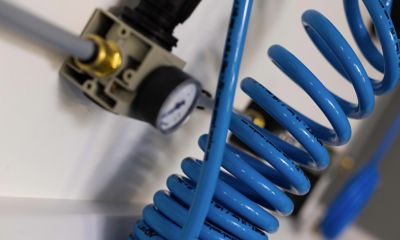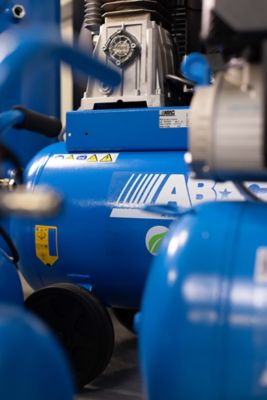Moisture can cause rust and corrosion in pipes and equipment, reducing their lifespan.
Maintaining the quality of compressed air is crucial to ensure the efficiency and longevity of equipment, as well as the quality of the end products. Contaminants such as moisture, dust, oil, and micro-organisms can significantly impact production processes and equipment. In this blog post, we will explore the main types of compressed air contamination, how to remove dust particles from air and other contaminants, and answer some common questions related to compressed air contamination.
Main Types of Compressed Air Contamination
Moisture
Moisture is the most prevalent contaminant in compressed air systems. It can enter the system through ambient air and condense as the air is compressed. Moisture can lead to several issues, including:
In industries like food and pharmaceuticals, moisture can promote bacterial growth, leading to contamination of products.
Moisture can affect the performance of pneumatic tools and equipment, leading to inefficiencies in production processes.
Dust Particles
Dust particles in the air can enter the compressed air system through the intake of the compressor. These particles can vary in size and can cause several problems, such as:
Dust particles can accumulate and cause blockages in pipes and filters, reducing the efficiency of the system.
Dust particles can cause abrasion and wear on moving parts, leading to increased maintenance costs and reduced equipment lifespan.
In industries with strict quality standards, dust particles can contaminate products, leading to defects and rejections.
Oil
Oil contamination can occur in compressed air systems that use lubricated compressors. Air compressor oil contamination can cause several issues, including:
Oil contamination can affect the quality of products, especially in industries like food and pharmaceuticals.
Oil can cause damage to equipment and tools, leading to increased maintenance costs and downtime.
Inhaling oil-contaminated air can pose health risks to workers, especially in confined spaces.
Choosing between an oil-injected or oil-free air compressor?
Explore our in-depth analysis to discover the key differences and make the right decision for your needs.
Microorganisms
Microorganisms, such as mold, bacteria and viruses, can enter the compressed air system through ambient air and multiply in non-dried compressed air. These micro-organisms can cause several problems, including:
In industries with strict hygiene standards, microorganisms can contaminate products, leading to health risks and product recalls.
Microorganisms can cause biofilm formation, leading to blockages and reduced efficiency of the system.
Inhaling air contaminated with microorganisms can pose health risks to workers.
Compressed Air Contaminant Removal
Filters
Filters are essential for removing contaminants from compressed air. Different types of filters are used to remove specific contaminants:
Particulate Filters
These filters are designed to remove dust particles and other solid contaminants from the compressed air.
Coalescing Filters
These filters are effective in removing oil aerosols and fine particles from the compressed air.
Activated Carbon Filters
These filters are used to remove oil vapors and odors from the compressed air.
Dryers
Dryers are used to remove moisture from compressed air. Different types of dryers are available, including:
Refrigerant Dryers
These dryers cool the compressed air to condense and remove moisture. They are suitable for less critical applications, providing a pressure dew point (PDP) of around 4°C to 7°C (39.2°F to 44.6°F).
Adsorption Dryers
These dryers are efficient in removing moisture through the process of adsorption, making them suitable for applications requiring very low moisture levels. These dryers can achieve much lower dew points, as low as -40°C or even -70°C / -40°F or even -94°F.
Common Questions about Compressed Air Contamination
The main types of contamination found in compressed air include moisture, dust, oil, and micro-organisms.
Moisture in compressed air can lead to corrosion, reduce the lifespan of equipment, and promote bacterial growth, especially in industries like food and pharmaceuticals.
Oil can enter compressed air through lubricated compressors, affecting product quality and potentially damaging equipment.
Microorganisms, such as mold, bacteria and viruses, can multiply in non-dried compressed air, causing contamination that can be harmful in industries with strict quality standards.
Businesses can protect their compressed air systems by using filters, dryers, and other filtration methods to remove contaminants and maintain air quality. Regular maintenance and monitoring are also important for ensuring optimal system performance.
Let Our Experts Safeguard Your Air Systems
If you have any questions about maintaining the quality of your compressed air systems or need assistance with selecting the right equipment, don’t hesitate to contact us. Our team of experts is here to help you ensure the efficiency and longevity of your equipment, as well as the quality of your products. Reach out to us today to learn more about our services and how we can help you safeguard your compressed air systems.












